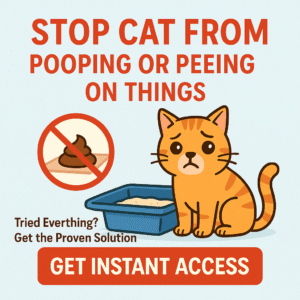Liver disease is a serious but often manageable condition in cats. Whether your cat has been diagnosed with hepatic lipidosis (fatty liver), chronic hepatitis, liver shunt, or elevated liver enzymes, the right nutrition is essential for healing and long-term health. With proper diet and supportive care, many cats with liver issues can regain their strength and enjoy a high quality of life.
Understanding Liver Disease in Cats
The liver is a vital organ that processes nutrients, removes toxins, and regulates metabolism. When the liver is compromised, symptoms may include:
- Loss of appetite or rapid weight loss
- Lethargy or weakness
- Vomiting or diarrhea
- Yellowing of the eyes, gums, or skin (jaundice)
- Drooling, behavior changes, or confusion
Common liver conditions in cats include hepatic lipidosis, chronic hepatitis, cholangiohepatitis, liver tumors, and portosystemic shunt. Always work closely with your veterinarian for diagnosis and ongoing care.
How Diet Supports Cats with Liver Problems
- High-quality, moderate protein: Cats need protein to maintain muscle, but too much or poor-quality protein can worsen some liver issues. Focus on highly digestible, animal-based sources.
- Moderate fat: Fat provides essential calories—important for cats that lose weight quickly—but must be easily digestible and not excessive.
- Increased energy density: Many liver cats lose their appetite. Calorie-dense foods allow them to get more energy from less food.
- Added antioxidants: Vitamin E, C, and selenium help reduce liver inflammation and support cellular repair.
- Controlled copper (if needed): Some liver diseases require low-copper diets—ask your vet if this applies to your cat.
- Wet food for hydration: High-moisture diets help prevent dehydration and are easier for many sick cats to eat.
Best Cat Food Features for Liver Health
- Highly digestible animal proteins: Look for foods with chicken, turkey, or fish as the main ingredient.
- Moderate fat content: Balanced for calories and digestibility (avoid extremely high- or low-fat foods unless prescribed).
- Calorie-dense, palatable foods: Enticing aroma and flavor help stimulate appetite in cats who may refuse to eat.
- Antioxidants and essential vitamins: Support liver repair and overall immune health.
- Wet (canned) food: Moisture supports kidney and liver function and makes eating easier.
Top Cat Foods for Liver Problems
1. Hill’s Prescription Diet l/d Liver Care (Wet & Dry, Veterinary Only)
- Formulated specifically for cats with liver disease or hepatic lipidosis.
- High in highly digestible protein, moderate fat, controlled copper, added L-carnitine and antioxidants.
- Available only by prescription—use under veterinary guidance.
2. Royal Canin Veterinary Diet Hepatic (Wet & Dry, Veterinary Only)
- Designed for cats with various liver disorders, featuring highly digestible protein, low copper, high energy, and antioxidants.
- Palatable and available in both wet and dry for flexibility.
- Prescription required—always consult your vet.
3. Purina Pro Plan Veterinary Diets NF Kidney Function (Wet & Dry, Veterinary Only)
- While formulated for kidneys, this food is often used in liver cases due to moderate protein, low phosphorus, and high palatability.
- Consult your vet to see if this option fits your cat’s specific liver condition.
4. Weruva Cats in the Kitchen (Wet)
- Moisture-rich, grain-free, and made with real meat and minimal fillers.
- High energy and highly digestible—good for cats that need calorie support and easy eating.
- Check protein and copper levels with your vet if your cat needs strict restrictions.
5. Tiki Cat Velvet Mousse (Wet)
- Soft, high-moisture mousse texture for cats with poor appetite or dental issues.
- Grain-free, animal protein-based, and gentle on digestion.
- Often used to encourage eating and boost calorie intake.
Practical Feeding Tips for Cats with Liver Disease
- Feed small, frequent meals: Many cats with liver problems do better with 3–5 small meals a day rather than one or two large ones.
- Warm food to enhance aroma: Gently heating wet food can make it more appealing to cats with low appetite.
- Hand-feed or use a syringe (if needed): For cats that refuse food, work with your vet on assisted feeding techniques to prevent rapid weight loss or hepatic lipidosis.
- Keep water fresh and accessible: Hydration is critical. Use a water fountain or several bowls around the home.
- Avoid raw or home-cooked diets unless prescribed: Nutritional imbalances can worsen liver problems. Only use special diets designed or approved by your veterinarian.
Foods and Ingredients to Avoid
- High-copper foods or supplements (unless your vet approves)
- Raw or undercooked meat, eggs, or fish (risk of infection)
- Low-quality brands high in by-products, fillers, or artificial preservatives
- Unapproved supplements or herbal remedies
When to See the Vet
- If your cat stops eating or drinking for more than 24 hours
- Shows signs of jaundice, vomiting, diarrhea, or confusion
- Has rapid weight loss or lethargy
- Any change in behavior, breathing, or urination
Liver disease is a medical emergency in many cases. Work closely with your veterinarian for ongoing bloodwork, medication, and nutrition adjustments.
The Bottom Line
The best cat food for liver problems is highly digestible, moderate in protein and fat, calorie-dense, and rich in antioxidants. Wet or canned foods are preferred for hydration and palatability. Always use prescription or vet-recommended diets when possible, and work with your veterinarian to monitor and support your cat’s recovery. With patience and attentive care, many cats with liver disease can regain weight, feel better, and live comfortably.
This article is for informational purposes only. Always consult your veterinarian before making dietary changes for a cat with liver disease or any chronic health issue.
